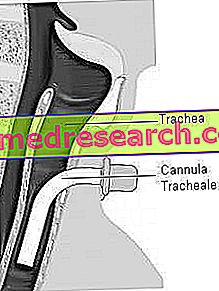Definition of granuloma
Dental granuloma is a chronic, generally asymptomatic and non-suppurative * inflammation of the root tip ** and its surrounding tissues. Typical silent complication of caries, fractures or dental chipping, the granuloma is essentially due to a bacterial invasion coming from the root canal ***. By slowly, but progressively, trespassing into adjacent areas, the infected granuloma gradually extends to the dental pulp, causing pulpits and necrosis of the radicular pulp.
In its simple form, the dental granuloma is not felt by the patient because it is asymptomatic: the infection, in fact, becomes chronic right away, without giving rise to any acute episode.

* non-suppurative lesion: it is an infection NOT accompanied by the formation of purulent material (pus)
** root apex: it is the terminal part of the root of a tooth
*** root canal: is the canaliculus within the root, in which nerve fibers and blood vessels flow
Even in the absence of appreciable symptoms, the granuloma still requires an accurate dental intervention. In the initial stages, the infection does not give any kind of problem or disturbance because the bacteria and granulocytes (a type of white blood cells) that make up the granuloma are in a sort of dynamic balance. When this form of forced cohabitation disappears, and the bacteria have the upper hand, the granuloma can become more acute giving rise to serious complications such as dental abscesses or fistulas.
Causes
A dental granuloma can depend on numerous, different causes:
- Untreated pulpits (inflammation of the dental pulp)
- Pulp necrosis not treated
- Advanced caries
- Chipped teeth / dental trauma: tooth fragments can penetrate deeply, causing granuloma
- Complication of a rotten (rare) tooth extraction
- Complication of pyorrhea
- Penetration of a foreign body inside the gum
- Chronic irritation from irritating chemical agents (caused, for example, by the failure of a dental filling)
Regardless of the cause, the dental granuloma can cross over into adjacent areas under two circumstances:
- Necrosis (death) of the pulp tissue: the decomposition of nerves and blood vessels within the root canal is an excellent breeding ground for bacteria. which, escaping from the root tip, carry their toxins creating the granuloma
- The tooth has been devitalized (it is without pulp): the granuloma, together with dental abscess and cysts, is an often unpredictable complication of devitalization

The circumscribed mass formed by the granuloma can be considered a sort of protection from the expansion of the infectious process, implemented by the body's defense mechanisms to prevent bacteria from spreading inside the tooth and in the surrounding sites. When the defense mechanisms fail to counterbalance the bacterial forces, the granuloma "bursts" and the damage expands.
Generalities and classification
There are several types of dental granuloma, distinguished by the severity of the infection. Among the most common forms, we recall:
- Simple dental granuloma (most frequent variant): it appears as a round neoformation, located around the root apex (terminal part). The granuloma consists of a granulation tissue more or less inflamed inside it, and rather organized even in the periphery. Its dimensions vary from those of a grain of corn to those of a pea.
- Abscessualized granuloma: it is a chronic dental abscess that develops inside a granuloma
- Suppurated granuloma (complication of simple granuloma): severe inflammation of the root, reached in the acute and purulent phase. The suppurative granuloma consists of an extremely inflamed granulation tissue, always associated with an acute dental abscess.
Symptoms
Simple dental granuloma, which is the most frequent form, can remain silent for a long time, persisting indefinitely even for years without the patient accusing any symptoms.

When symptomatic, dental granuloma can cause toothache, intense discomfort, torment and gum swelling.
If left untreated, a dental granuloma can develop into cysts and form painful fistulas.
The presence of a dental granuloma is ascertained by a simple radiographic examination.
Treatments and interventions
Being a chronic infection, antibiotic therapy for the treatment of granuloma would be vain and superfluous, except for exacerbations (acute granuloma).
The dental granuloma must be adequately treated, even if asymptomatic: in fact, if the granuloma burst, the bacteria that populate it can expand through the blood, creating septicemia, a serious clinical condition that can seriously endanger the patient's life. Clearly we have reported an extreme case, but it is important to be aware of the possible dangers that could be encountered.
Devitalization is the treatment of choice for the treatment of granuloma.
In the case of the granulomatous lesion originating on a devitalized tooth, it is possible to proceed with a reprocessing, this possibility not always possible, especially in the presence of crown prostheses, or of complex dental reconstructions with metal pins. In similar situations, the only possibility to cure granuloma definitively is apicectomy (surgical removal of the root apex of the infected tooth). In severe cases, especially when the granuloma continues to recur, tooth extraction is required.
To conclude, let us once again remember that a dental granuloma always requires specialized dental treatment and cannot heal spontaneously.



